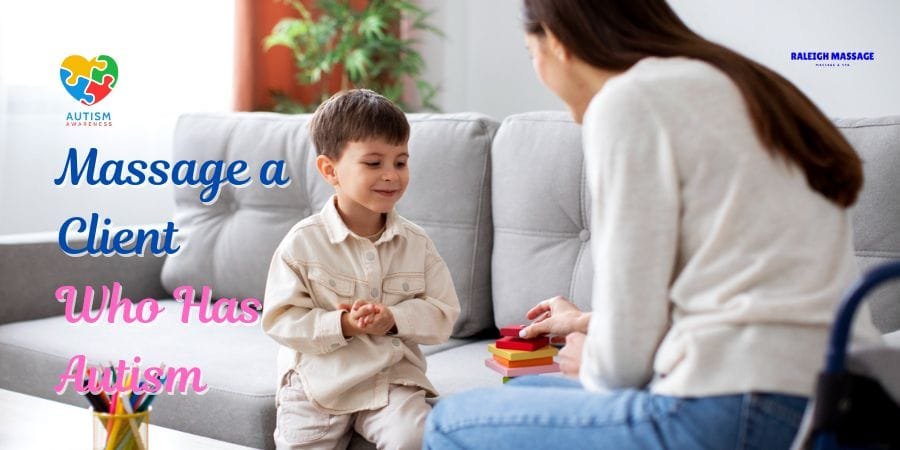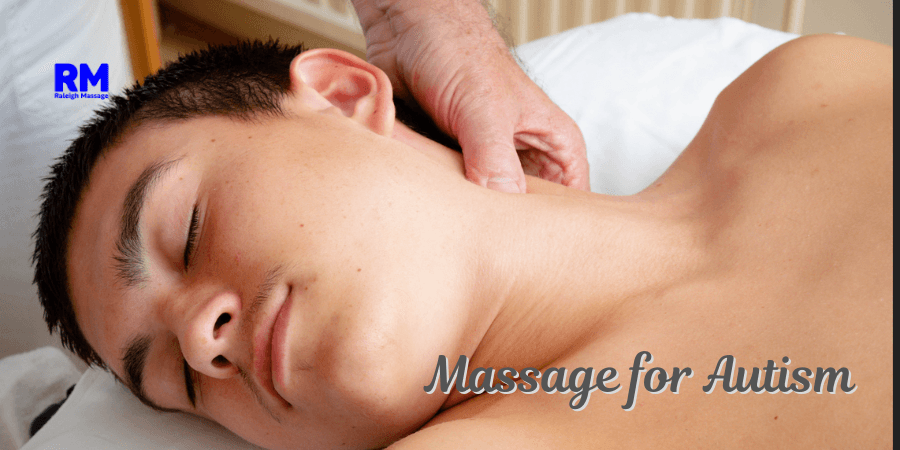Massaging a client who has autism is a unique experience. Every person is different, so every massage session needs a personal touch. If you have never worked with someone who has autism before, you may have questions. You might wonder how to make the experience comfortable and beneficial for them.
People with autism process touch differently. Some may be hypersensitive, while others may seek deep pressure. A gentle approach is best. Always communicate clearly and adjust techniques based on their comfort level. This article will help you understand how to provide the best massage for a client with autism.
Preparing for the Massage
1. Create a Safe Environment
A calm and predictable atmosphere is important. Autistic clients can become overwhelmed with strong lights, loud sound, and strong smells. Ask them beforehand about any sensory preference in a session. Dim lights, a quiet room, and no strong oils are a must.
A structured session environment can instill a sense of security. Having a routine for a session, with a predictable beginning and an endpoint, can work to mitigate anxiety. Having soft background sound, such as white sound, can instill a calm atmosphere.
2. Communicate Clearly
Clear and simple language is most effective. Clients sometimes have difficulty in communicating requirements. Ask direct questions and use simple language. Don’t say, “Would you prefer a strong massage or a soft one?” Instead, say, “Do you prefer soft or strong?”
Nonverbal clients will respond with a face expression or a gesture. Look at them and follow according to that. In case they look unsure or nervous, model first with your arm touch so that they know in advance.
3. Establish Trust
Trust is essential. A new experience can feel overwhelming for someone with autism. Start with small interactions before the session begins. Let them get comfortable in the space. If they like, allow them to touch the massage table and explore the room.
Introducing massage gradually can also be helpful. Some clients may need time to adjust before they feel ready for a full session. A few short sessions can build confidence and familiarity, making future massages more effective.
Techniques for Massaging a Client with Autism
1. Start Slow and Gentle
Begin with a soft, slow pace and ease in gently. Sudden pressure shifts can become painful. Clients will have a preference for deep, strong pressure and for soft stroking, but respond to body language and adjust.
Using predictable and repetitive motions can make a person feel secure. Sudden and unpredictable motions can make a person uncomfortable and even nervous. Give the client a chance to adapt to the touch first, and then build intensity in a slow and continuous manner.
2. Use Consistent, Rhythmic Motions
Repetitive, steady motion can have a calming effect. Long, slow sweeps and soft compressions will best serve your purpose. Don’t use quick, unpredictable motion, for such motion can hurt.
Deep pressure therapy, including slow squeezes and weighted touch, can work for clients in search of proprioceptive input. Proprioceptive input enables an individual with autism to comprehend position and motion in relation to one’s body, allowing for feelings of relaxation and regulating one’s sensations.
3. Allow Breaks
Some clients will need a break in a session. In the event that they become restless and fussy, stop and let them regroup. Several deep breaths and a quick stretch can calm them down and enable them to move forward.
Respect their desire for mastery over their life experience. Respect any request to discontinue and not break, and don’t make them go on, even in a hurry, for future sessions will become an issue.
4. Respect Personal Boundaries
Clients with autism have specific parts that they don’t want touched. Ask them first, then touch sensitive parts, and when they flinch or stiffen, don’t go near that part. Let them direct the session at a comfort level that works for them.
Offering choices can make your client empowered and in charge. For example, say, “Shall I work with your hands first, or your shoulders?” Let them have a say in a matter and trust will build and make them at ease.
Choosing the Right Massage Oils and Tools
Some clients with autism are sensitive to scents and textures. Unscented oils or hypoallergenic lotions are best. Avoid anything with strong fragrances, as they may be overwhelming.
Massage tools like weighted blankets or textured rollers can be helpful. Deep pressure techniques, such as using a weighted tool, may provide a sense of security and relaxation. A simple tool like a soft-bristled brush can offer sensory input in a way that feels comforting.
When selecting massage oils, consider their texture. Some clients may prefer thicker creams that provide more resistance, while others may enjoy lightweight, silky oils. Always test a small amount first to ensure it is comfortable for the client.
Benefits of Massage for Autism
Massage therapy can benefit numerous clients with autism in several ways. It can promote relaxation, ease tension, and manage sensations. Some of its most important benefits include:
- Reduces Anxiety – Gentle touch can actually lessen anxiety and tension levels.
- Improves Sleep – Relaxation through a massage can cause sounder sleep routines.
- Enhances Body Awareness – Massage aids in enhancing coordination and processing of sensations.
- Encourages Relaxation – Gentle rhythmic motion can calm down the nervous system.
- Supports Emotional Regulation – Massage can help in emotion processing and reducing meltdowns in individuals with autism.
- Promotes Social Attachment –Gentle, secure touch can develop trust and a sense of nearness with therapists or carers.
After the Massage
1. Provide a Gentle Transition
A sudden end to the session may feel jarring. Allow the client time to adjust before getting up. You can use slow, gentle strokes to signal the session is ending.
Providing verbal or visual cues can also help. For example, saying, “We have five minutes left,” can help the client prepare for the transition. Using a timer or visual schedule can be beneficial.
2. Offer Post-Massage Comfort<
Some clients will require additional time to become grounded following a massage. Have a quiet room in which they can sit and calm down before departing. Have water and a soft, weighted blanket at your disposal for them in case additional comfort is desired.
Engaging in a simple, repetitive activity during a session, such as deep breathing, can make transition easier. It allows for integration of the impact of the massage in the body.
3. Get Feedback
Ask for feedback in a manner in which they will understand. Observe them when they cannot speak, and see how they react. Were they at ease? Were there any sections that they liked or hated? Modify future sessions according to them.
Keeping a simple record of both reaction and preference can track improvement. It can inform future sessions and maximize overall client experience.
Massaging a client who has autism requires patience, empathy, and adaptability. Every person is different, so take the time to understand their needs. Create a safe and calming space. Communicate clearly. Use gentle, consistent techniques. Most importantly, respect their boundaries and preferences. When done right, massage therapy can be a positive and beneficial experience.
FAQ’s
1. Can massage help reduce anxiety in clients with autism?
Yes, massage can help reduce anxiety. Many clients with autism find rhythmic touch soothing. Gentle pressure and slow movements can calm the nervous system. However, every person is different. Some may prefer deep pressure, while others may like light strokes. Always adjust the technique based on their comfort level.
2. How do I know if a client with autism is comfortable during the massage?
Pay attention to body language. If they seem relaxed, enjoy the touch, or stay still, they are likely comfortable. If they tense up, pull away, or show signs of distress, adjust your approach. Verbal clients may tell you what they like or dislike. Nonverbal clients may use gestures or facial expressions to communicate.
3. What types of massage techniques work best for clients with autism?
Repetitive and rhythmic techniques work best. Long, slow strokes, deep pressure, and gentle compressions can be very calming. Avoid sudden movements or unpredictable changes in pressure. Some clients may also enjoy weighted blankets or gentle rocking motions.
4. Should I use scented massage oils for clients with autism?
It is best to use unscented or hypoallergenic oils. Many clients with autism have strong sensory sensitivities. Strong fragrances may be overwhelming and cause discomfort. Always ask the client or their caregiver before using any scented products.
5. What should I do if a client with autism becomes overwhelmed during the massage?
If a client becomes overwhelmed, stop and give them a break. Allow them to reset before continuing. Offer a quiet space, deep breaths, or a weighted blanket for comfort. Always respect their limits and never force them to continue if they are distressed.








